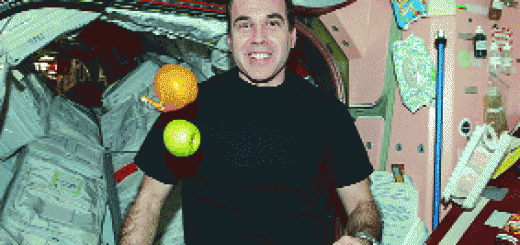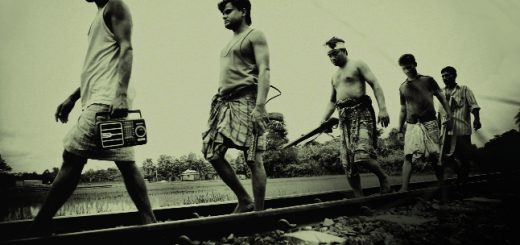Satellite age Prospects and problems ahead -ABU TAHIR MUSTAKIM
A rover is spinning through the desert on the red planet Mars. Enjoying selfies. It is a real busy time in search of life. People are enjoying those moments sitting back at home on the Earth about five and a half crore kilometres away. Managing the affairs of the world from the surface of the Earth is not helping the managers in a great way. That’s why the managers need a bird’s eye view of the world. The world leaders need to see their domain — the world and the activities on it — from the top or sky or space. So satellites are the solution to the pressing problems. There are around three thousand satellites orbiting the Earth. Of them around 1000 satellites are helping humans in communications. Getting the idea of traffic jams on the road without leaving the house because of the great help of satellites. Visiting different parts of the world virtually from home has also become possible through the satellites orbiting the earth.
Apart from serving humans in different ways, the satellites are now being used to monitor the places of the planet where people have been enslaved? This Cubesat can tell everything even where nature is being destroyed by cutting down trees. The instruments are silently playing a role in transforming our planet in the unprecedented advancement of science. Some of them are as small as a shoe box, but very important. They have been named Cubesat because of their shape. There are currently thousands of artificial satellites in orbit.
The satellites are contributing to the transformation of civilization by assisting in space exploration, cyclone forecasting, surveillance and espionage. Six of these Cubesats are directly helping to change the world. One of which is an artificial satellite at The Rights Lab at the University of Nottingham in the United Kingdom. As part of the global struggle for human rights, The Rights Lab has been using small satellite images to capture images of slavery in the modern world. The agency also reveals information on where people in the world are being forced to work without pay or for a pittance.
The company recently collected images of a makeshift camp in Greece via CubeSat. In that camp a group of Bangladeshis are being used as slaves to collect fruits from trees in the garden. Satellites are used to see how such settlements change over time, said Doreen Boyd, the project’s lead professor. He said that the real picture of the camp was sought with the help of a local NGO, who had visited the Bangladeshi settlements and tried their inhumane life there. They talk to the immigrants and got to know the details about what is being done to them on the condition that they are allowed to stay. There are at least 50 such camps in the area.
Another important area of use of Cubesat is the nature conservation programme. The Norwegian government is working with a company called ‘Planet’ to stop deforestation in the world. The company has placed about two hundred satellites in Earth’s orbit. These are taking pictures of our planet every moment with high power cameras. Will Marshall, CEO of Planet, says the Norwegian government pays to keep an eye on the nature of life of 60 of these countries. He said the forest ministries of these tropical countries were regularly alerted about where deforestation was taking place. The Norwegian government will decide whether to provide financial assistance based on the information gathered from artificial satellites on deforestation and the steps taken by the countries concerned to prevent deforestation.
Although wildlife is an integral part of the nature of life, many species are on the verge of extinction due to deforestation, urbanisation, and adverse effects of climate change. A group of students from Italy and Kenya have taken steps to protect their families. They have launched a satellite called WildtrackCube-Simba. The Cubesat monitors birds and mammals in Kenya’s national parks. There are conflicts with wildlife in many ways, and these are very realistic, says Daniel Kierrie, a student engineer in Nairobi.
Elephants, he said, destroy the crops of farmers around the forest, causing damage to property; even killings are happening. This is creating a conflicting situation between elephants and humans. Therefore, the movement of wild animals is being monitored and the authorities are being informed about their movements. This may alert the villagers. Next year, radio tags will be used to accurately identify the location of wildlife. This will also provide information on the animal’s physical condition and if killed.
Satellites are sent into orbit for the benefit of civilization. But these are becoming the causes of disaster at one time. Russia’s recent missile test, in particular, has raised concerns around the world. It has scattered thousands of pieces of artificial satellites in orbit. Thousands of such pieces of junk have been identified. Even small pieces in size of this are enough to jeopardise a satellite and an astronaut spacecraft. Scientists have come a long way in solving this problem.
The Earth has a fleet of satellites in the sky to provide special types of internet services. These are connecting humans with certain objects through the internet system. Notable among these are wind turbines. This easily available method of power generation converts wind energy into electricity. But the turbines are installed in inaccessible areas, which have no way of knowing if they are damaged, nor is regular monitoring possible. So a company called Ping Service has created a sensor. It observes the sound of the turbine. Inform the turbine operator immediately if there is any damage to the blade or any change in sound. Cubesat mediates here.
Cubesat not only keeps track of the Earth below the orbit, but also looks at the constellations. Exploring deeper and deeper into space. Giving information about the cosmic creation from the creation of the universe to unknown planets-satellites, stars, galaxies etc. It is also making connections with other rovers exploring in space. NASA, the US space agency, first sent such a Cubesat into space in 2018. The company will launch 10 more Cubesats into orbit next year, which will search for life and water reserves at the moon’s south pole. And all of this is part of a project, which can make people’s dream of settling one day on other planets including the moon come true.
















Recent Comments